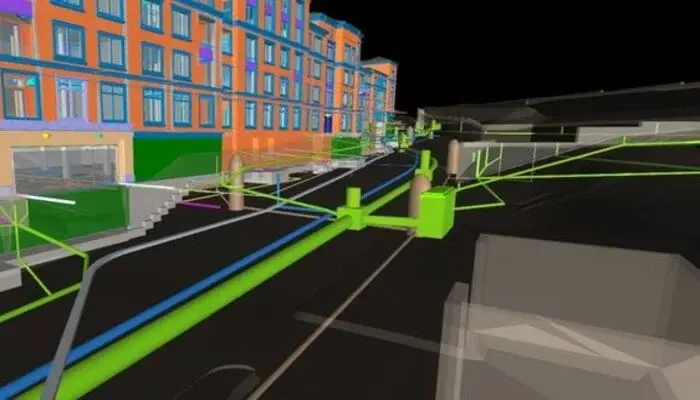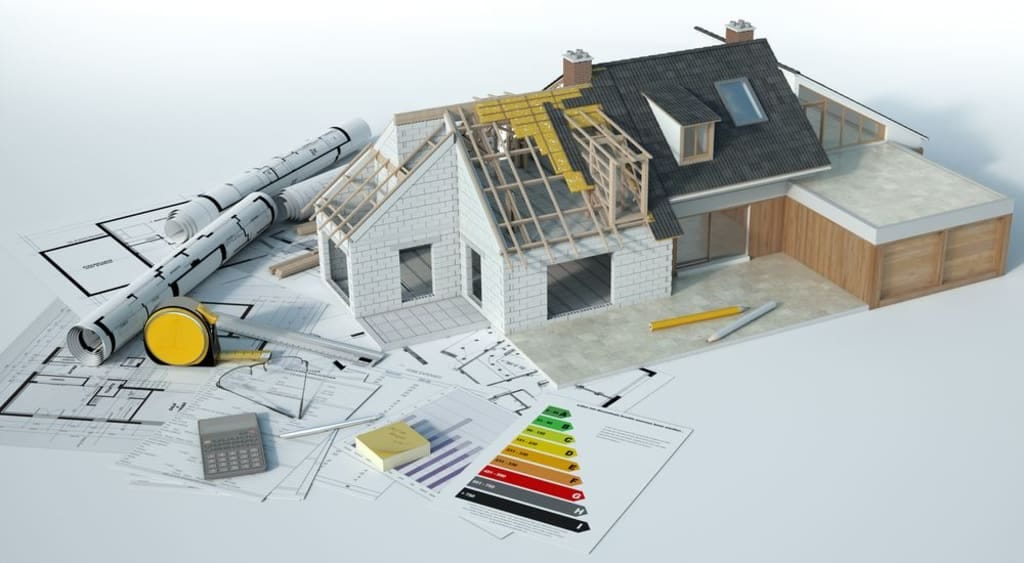
Building Information Modeling (BIM) has significantly changed the construction industry by providing a collaborative platform for architects, engineers, and contractors to design, visualise, and coordinate projects efficiently. However, the benefits of BIM extend far beyond the design and construction phases, offering enormous advantages in infrastructure asset management.
Asset management is a critical component of infrastructure projects, involving the systematic and coordinated activities required to optimise the lifecycle of physical assets, such as buildings, bridges, roads, and utilities. Effective asset management ensures that these infrastructure components remain functional, safe, and cost-effective throughout their operational lifespan.
Role of BIM in Asset Management
BIM plays an integral role in asset management by providing a data-rich, digital representation of the built environment. This digital model serves as a comprehensive repository of information, encompassing the assets’ physical and functional characteristics and their maintenance requirements, operational parameters, and lifecycle data.
Integrating BIM into asset management processes enables stakeholders to leverage information embedded within the model, allowing more informed decision-making and streamlining various asset management activities. Some key applications of BIM in asset management include:
1. Asset Inventory and Documentation
BIM models provide a detailed and accurate assets inventory, including specifications, locations, and interdependencies. This comprehensive documentation ensures that asset managers have access to up-to-date information, enabling better planning and coordination of maintenance activities.
2. Condition Assessment and Monitoring
By integrating sensor data and Internet of Things (IoT) technologies with BIM models, asset managers can monitor the real-time performance and condition of assets. This continuous monitoring allows for proactive maintenance strategies, minimising downtime and reducing the risk of costly failures.
Also Check out: BIM Specialist: Roles, Salaries, and Courses to Become One
3. Predictive Maintenance
The data-rich nature of BIM models, combined with advanced analytics and machine learning algorithms, enables predictive maintenance strategies. By analysing historical data, usage patterns, and environmental factors, asset managers can anticipate potential failures and schedule maintenance activities accordingly, optimising resource allocation and minimising disruptions.
4. Lifecycle Management
BIM models capture an asset’s entire lifecycle, from design and construction to operation and decommissioning. This holistic view enables asset managers to make informed decisions regarding asset replacement, upgrades, or decommissioning, ensuring that resources are allocated efficiently and sustainably.
5. Visualisation and Analysis
BIM models provide interactive 3D visualisations of assets, allowing asset managers to explore and analyse various scenarios, such as simulating maintenance activities, evaluating accessibility, or assessing the impact of proposed modifications or retrofits.
Tools & Software for Asset Management with BIM
Several specialised tools and software platforms have been developed to leverage BIM for asset management. These solutions enable seamless integration of BIM data with asset management processes and facilitate stakeholder collaboration. Here are some examples of commonly used tools and software:
1. Asset Management Platforms
Software platforms like IBM Maximo, Infor EAM, and Oracle Primavera offer dedicated asset management functionalities, including work order management, inventory tracking, and preventive maintenance scheduling. Many platforms have integrated BIM construction and management capabilities or can interface with BIM models through APIs or data exchange formats.
2. BIM Authoring Tools
Software like Autodesk Revit, Bentley Systems' MicroStation, and Graphisoft ArchiCAD are widely used for creating and managing BIM models during the design and construction phases. These tools often include features for asset management, such as tagging components with maintenance data or exporting model information for integration with asset management platforms.
3. BIM Viewers and Collaboration Tools
Applications like Autodesk BIM 360, Bentley Navigator, and Solibri Model Viewer allow stakeholders to visualise and navigate BIM models, review clashes and issues, and collaborate on asset management activities. These tools can be handy for field technicians and maintenance crews, providing on-site access to up-to-date asset information.
4. Data Management and Integration Solutions
Solutions like Autodesk Forge, Bentley iTwin, and Nemetschek Group's Open BIM solutions enable integrating BIM data with other systems and databases, facilitating data exchange and interoperability between different software platforms used for asset management.
5. Analytics and Reporting Tools
Tools like Power BI, Tableau, and Qlik offer advanced data visualisation and reporting capabilities, allowing asset managers to analyse and present asset performance data, maintenance trends, and lifecycle forecasts derived from BIM models and asset management systems.
These tools often integrate, forming an ecosystem enabling seamless data flow and collaboration among stakeholders throughout the asset lifecycle.
Advantages of BIM and Asset Management
The synergy between BIM and asset management offers numerous advantages that can enhance the efficiency, reliability, and cost-effectiveness of infrastructure asset management:
1. Improved Decision-Making
The comprehensive and accurate data provided by BIM models and asset management systems enables data-driven decision-making. Based on reliable and up-to-date information, asset managers can make informed choices regarding maintenance strategies, resource allocation, and capital expenditures.
2. Increased Operational Efficiency
BIM and asset management solutions can increase operational efficiency by streamlining asset management processes and providing easy access to asset information. Maintenance activities can be scheduled and coordinated more effectively, reducing downtime and minimising disruptions.
3. Extended Asset Lifespan
Predictive maintenance strategies enabled by BIM and asset management systems can help extend the lifespan of assets by identifying and addressing potential issues before they escalate into major failures. This proactive approach can significantly reduce the need for costly replacements or repairs.
4. Cost Savings
The optimised maintenance strategies and improved decision-making facilitated by BIM and asset management can lead to substantial cost savings throughout the asset lifecycle. Organisations can realise significant cost benefits by minimising unplanned downtime, reducing unnecessary maintenance activities, and optimising resource utilisation.
5. Enhanced Safety and Compliance
BIM models provide detailed information about asset components, materials, and safety requirements. When combined with asset management systems, this information can help ensure compliance with relevant regulations and standards, enhancing overall safety for personnel and the public.
6. Collaboration and Communication
BIM models and asset management platforms offer a common platform for stakeholders to collaborate and communicate effectively. This collaboration facilitates knowledge sharing, streamlines decision-making processes, and ensures all parties access accurate and up-to-date information.
Also Check out: BIM Engineer: Roles, Salaries, and Courses to Become One
Challenges of Asset Management Without BIM
While BIM offers significant advantages for asset management, organisations that do not leverage this technology may face various challenges:
1. Fragmented and Inaccurate Data
Asset data is often scattered across sources like paper records, outdated drawings, and disconnected databases without a centralised BIM model. This fragmentation leads to several issues:
- Data Inconsistencies: Different sources may contain conflicting information about the same asset, making it difficult to determine the accurate data.
- Incomplete Information: Critical details about an asset's specifications, maintenance history, or operational parameters may need to be added or updated across different sources.
- Limited Accessibility: Retrieving asset information from multiple sources can be time-consuming and cumbersome, hindering efficient decision-making.
Data Duplication: The lack of a single source of truth can lead to redundant data entry and storage, increasing the risk of errors and inconsistencies.
2. Lack of Visibility and Traceability
BIM models provide a comprehensive and visual representation of assets, enabling a better understanding of their spatial relationships, interdependencies, and lifecycle stages. Without BIM, asset managers may face challenges such as:
- Limited Asset Tracking: It becomes difficult to track the location, condition, and status of assets across their lifecycle, particularly in complex infrastructure systems.
- Unclear Interdependencies: Understanding how different assets are interconnected and how changes to one component may impact others can be a significant challenge.
Lifecycle Visibility: Without a centralised repository, tracing an asset's history from design, construction, operation, maintenance, and eventual decommissioning becomes more complicated.
3. Reactive Maintenance Strategies
BIM models, combined with advanced analytics and sensor data, enable predictive maintenance strategies by identifying potential issues before they occur. Without this capability, asset managers may be limited to reactive maintenance approaches:
- Increased Downtime: Unexpected failures may cause assets to experience unplanned downtime, leading to operational disruptions and potential safety risks.
- Higher Maintenance Costs: Reactive maintenance often involves more extensive repairs or replacements, resulting in higher costs than preventive maintenance.
Shortened Asset Lifespan: Failing to address issues proactively can accelerate asset degradation, reducing overall lifespan and increasing replacement costs.
4. Inefficient Resource Allocation
Accurate and comprehensive asset data is crucial for optimising resource allocation for maintenance activities. Without BIM, asset managers may face challenges such as:
- Prioritisation Difficulties: Determining which assets require immediate attention and allocating resources accordingly can be challenging without clearly understanding their condition and criticality.
- Inefficient Scheduling: Maintenance schedules may need to be better coordinated, leading to efficient use of personnel, equipment, and materials.
Inventory Management Issues: With accurate asset information, ensuring the availability of necessary spare parts and materials for maintenance can be manageable.
5. Limited Collaboration and Communication
BIM models and associated platforms facilitate collaboration and communication among stakeholders involved in asset management. Without these tools, organisations may encounter:
- Siloed Information: Different teams or departments may work with disparate data sources, hindering effective information sharing and decision-making.
- Communication Breakdowns: Lack of a common platform can lead to miscommunication, delays, and potential errors during maintenance activities.
Coordination Challenges: Without a centralised system, coordinating the efforts of multiple teams, contractors, and service providers can become more complex.
Also Check out: Top 10 BIM Interview Questions for Civil Engineers and How To Ace Them
6. Regulatory Compliance Challenges
Ensuring compliance with relevant regulations and standards is crucial in asset management, particularly for critical infrastructure. Without BIM, organisations may face challenges such as:
- Incomplete Documentation: It may be easier to prove compliance with readily available detailed asset information, maintenance records, and documentation.
- Audit Difficulties: Auditors and inspectors may need access to comprehensive and up-to-date asset data to verify compliance.
- Increased Risks: Non-compliance can lead to potential fines, legal liabilities, and reputational damage, all of which can be mitigated by leveraging BIM's transparency and traceability.
While traditional asset management approaches can be practical, the challenges highlight BIM advantages regarding data accuracy, visibility, proactive maintenance, resource optimisation, collaboration, and compliance. By addressing these challenges, organisations can achieve more efficient, reliable, and cost-effective asset management practices.
Conclusion
Integrating Building Information Modeling (BIM) with asset management processes offers numerous benefits for organisations responsible for managing infrastructure assets. By leveraging the data-rich digital representations provided by BIM models, asset managers can make informed decisions, optimise maintenance strategies, extend asset lifecycles, and realise substantial cost savings.
BIM’s role in asset management spans various activities, including asset inventory and documentation, condition assessment and monitoring, predictive maintenance, lifecycle management, and architectural visualisation and analysis. These capabilities are enabled by a range of specialised tools and software platforms that facilitate the seamless integration of BIM data with asset management processes.
If you want to master BIM, Novatr offers a BIM Professional Course for Civil Engineers that applies to the construction industry. You can learn from industry veterans, master more than 10 BIM software, and utilise industry workflows by enrolling in the course. You also get to work on a capstone project to polish your skills. Explore the course and begin your journey right away.
To learn more about the industry, visit our Resources Page.
Was this content helpful to you



.jpg)






